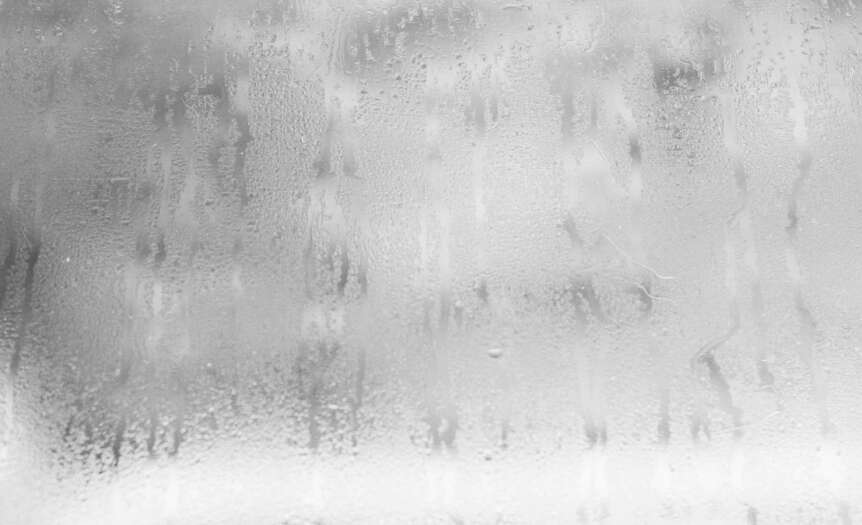Did you know that various items within your home reduce your indoor air quality? From your floors to your walls, volatile organic compounds, or VOCs, occur from a range of places, filling your rooms with toxic gases and poor air quality. VOCs leach into the air through a process called off-gassing. The high-grade or chemical-based products used in manufacturing evaporate over time. Too much VOC exposure affects people in different ways, including breathing difficulties, irritations, and heightened allergies. Although off-gassing is hard to fully avoid since chemicals play a huge role in many different products, there are ways to prevent overexposure. Here are a couple of tips on how to prevent VOC off-gassing in your home.
Control Humidity Levels
There are many reasons why high humidity levels negatively affect your health, including increasing the production of VOC off-gas. In high heat and humidity levels, the harsh chemicals in manufactured products, wall paints, and other items and building materials evaporate into a gas and release toxic airborne particles. Heat and warm room temperatures speed up the off-gassing process. Like with many chemical reactions, adding heat stimulates the chemicals into a reactive process, allowing them to change form and create new substances. Controlling your indoor humidity levels minimizes off-gassing and allows proper air ventilation to circulate and filter through your rooms.
Use Natural Cleaning Products
Have you ever felt light-headed after using a cleaning spray? It’s partially due to the VOC off-gases released from your cleaning product’s chemical solution. Many popular high-grade cleaning supplies use strong chemicals to clean and sanitize effectively. However, those same chemicals release VOC off-gasses. Opting for natural or homemade cleaning solutions reduces off-gases since they eliminate the use of strong chemicals. As a general rule of thumb, the easier it is to read the list of ingredients, the fewer chemicals and toxins they include.
Purchase Used Furnishings
New furnishings are a major culprit in generating off-gasses. From adhesives to stains and synthetic fibers, many furniture pieces include exposed components or contain industrial chemicals. Over time, the off-gases decline as most of the chemicals from manufacturing deplete. Purchasing secondhand furniture decreases the overall rate of off-gases in your home. They already have released most of their toxic fumes and contain very little chemical residue.
Avoid or Remove Wall-to-Wall Carpeting
Another main offender of off-gassing is wall-to-wall carpeting. The synthetic fibers that cover the main surface of carpets require an industrialized chemical reaction in order to come into existence. These chemicals create VOC off-gasses as they react to their new surroundings. Similarly, the adhesive used to install and bind the carpet also includes VOCs that release off-gas over time. Switching out entire floor carpets minimizes off-gassing in your home, and it also reduces other toxins that arise from the dust and other toxins that get trapped between the fibers of carpets.
Preventing VOC off-gassing in your home includes minimizing the number of chemicals or chemical-exposed products. Although you can’t one hundred percent avoid them, you can still reduce their occurrence. With fewer VOC off-gases in your home, the better your indoor air quality and the safer your home becomes.





 Deering Estate
Deering Estate
 Massage Envy South Miami
Massage Envy South Miami
 Calla Blow Dry
Calla Blow Dry
 My Derma Clinic
My Derma Clinic
 Sushi Maki
Sushi Maki
 Sports Grill
Sports Grill
 The Healthy Kitchen
The Healthy Kitchen
 Golden Rule Seafood
Golden Rule Seafood
 Malanga Cuban Café
Malanga Cuban Café

 Kathleen Ballard
Kathleen Ballard
 Panter, Panter & Sampedro
Panter, Panter & Sampedro
 Vintage Liquors
Vintage Liquors
 The Dog from Ipanema
The Dog from Ipanema
 Rubinstein Family Chiropractic
Rubinstein Family Chiropractic
 Your Pet’s Best
Your Pet’s Best
 Indigo Republic
Indigo Republic




 ATR Luxury Homes
ATR Luxury Homes


 2112 Design Studio
2112 Design Studio
 Hamilton Fox & Company
Hamilton Fox & Company
 Creative Design Services
Creative Design Services
 Best Pest Professionals
Best Pest Professionals
 HD Tree Services
HD Tree Services
 Trinity Air Conditioning Company
Trinity Air Conditioning Company
 Cisca Construction & Development
Cisca Construction & Development
 Mosquito Joe
Mosquito Joe
 Cutler Bay Solar Solutions
Cutler Bay Solar Solutions


 Miami Royal Ballet & Dance
Miami Royal Ballet & Dance
 Christopher Columbus
Christopher Columbus
 Pineview Preschools
Pineview Preschools
 Westminster
Westminster
 Carrollton
Carrollton
 Lil’ Jungle
Lil’ Jungle
 Frost Science Museum
Frost Science Museum
 Palmer Trinity School
Palmer Trinity School
 South Florida Music
South Florida Music
 Pinecrest Orthodontics
Pinecrest Orthodontics
 Dr. Bob Pediatric Dentist
Dr. Bob Pediatric Dentist
 d.pediatrics
d.pediatrics
 South Miami Women’s Health
South Miami Women’s Health

 The Spot Barbershop
The Spot Barbershop
 My Derma Clinic
My Derma Clinic




 Miami Dance Project
Miami Dance Project

 Rubinstein Family Chiropractic
Rubinstein Family Chiropractic
 Indigo Republic
Indigo Republic

 Safes Universe
Safes Universe
 Vintage Liquors
Vintage Liquors
 Evenings Delight
Evenings Delight





 Atchana’s Homegrown Thai
Atchana’s Homegrown Thai
 Baptist Health South Florida
Baptist Health South Florida

 Laser Eye Center of Miami
Laser Eye Center of Miami
 Visiting Angels
Visiting Angels
 OpusCare of South Florida
OpusCare of South Florida

 Your Pet’s Best
Your Pet’s Best





 HD Tree Services
HD Tree Services
 Hamilton Fox & Company
Hamilton Fox & Company


 Creative Design Services
Creative Design Services